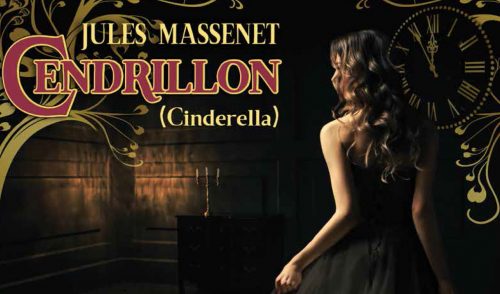By Kameron Ghanavati
Massenet’s Cendrillon is coming together quickly here at Eastman. Stage assistants, costume designers, lighting designers, singers, the orchestra, and opera staff are hard at work preparing for the upcoming two-week marathon of technical rehearsals.
The process, however, has been ongoing since rehearsals began in December. At that point, the creative process was in its infancy and students began to create their characters. What is unique about each new performance of Massenet’s Cendrillon– and every theatrical work- is that the music remains constant but the visual representation constantly changes with each company and production. Notably, character interpretations are altered slightly depending on what the director calls for.
We are fortunate to have a creative staff in the Opera Department that encourages students to organically create characters and interpret the text on a much deeper level. Director Steven Daigle has been a wonderful mentor and director to students during this process and offers a skeleton for characters. It is then up to the student performers to create the rest of the character. Under his guidance are students able to find their own unique process to create characters.
So, how do I go about this? The process is different for every student, but I find it most effective to first translate the whole scene, including the lines from other characters in the scene. This allows me to understand the communication between characters and find the motivation for each line as well as the overall mood. Then, I develop a background story for my character by asking myself questions such as “What has he/she experienced? What are (at least) three personality traits I can think of? How are they viewed by the other characters?”.
This is essential to character development and helps an actor define their place in the script or libretto and the story’s setting. Finally, I then find one gesture that fits the character. This kinesthetic connection helps me embody the character and realize that I am no longer myself. Perhaps they walk with a limp, have one eye closed, a droopy mouth, walk with a hop, or even something as discreet as having a crooked index finger. From that starting point, I naturally find other physical attributes that define the character.
For the Eastman Opera Theatre’s production of Cendrillon I play the part of “Courtier”. Myself and two other students, Brent Doucette and Anders Namestnik, make up the trio of courtiers that blindly follow the Master of Ceremonies, played by Fred Diengott. Together, we decided to establish a comedic twist to our characters by walking with a quick shuffle. The physical movement creates a comedic relief and helps us establish the kinesthetic connection to our character. Further, each of us developed specific character attitudes. While all three of us are enthusiastic, we make distinct choices as to how we react to the situations occurring around us. My character is overly dramatic, easily excited, and flamboyant.
The Courtiers and Master of Ceremonies are first introduced in the opera at the top of Act II. The palace is quickly preparing for the upcoming ball despite the Prince’s reluctant attitude, and we enter excitedly to see an uninterested prince. Based off of the translation from this scene, the ironic comedy is created by our excited attitude juxtaposed with the Prince’s frustration.
Actors, singing actors, and singers create unique interpretations of characters to allow the text on the page to come to life. The black ink suddenly becomes a gateway into a new world filled with people you may or may not encounter in real life.
Come see how Kameron and other Eastman Opera students have interpreted the timeless tale of Cinderella from April 6-8, 7:30 p.m. or April 9 at 2 p.m. in Kodak Hall. Tickets are on sale through the box office (www.eastmantheatre.org)

